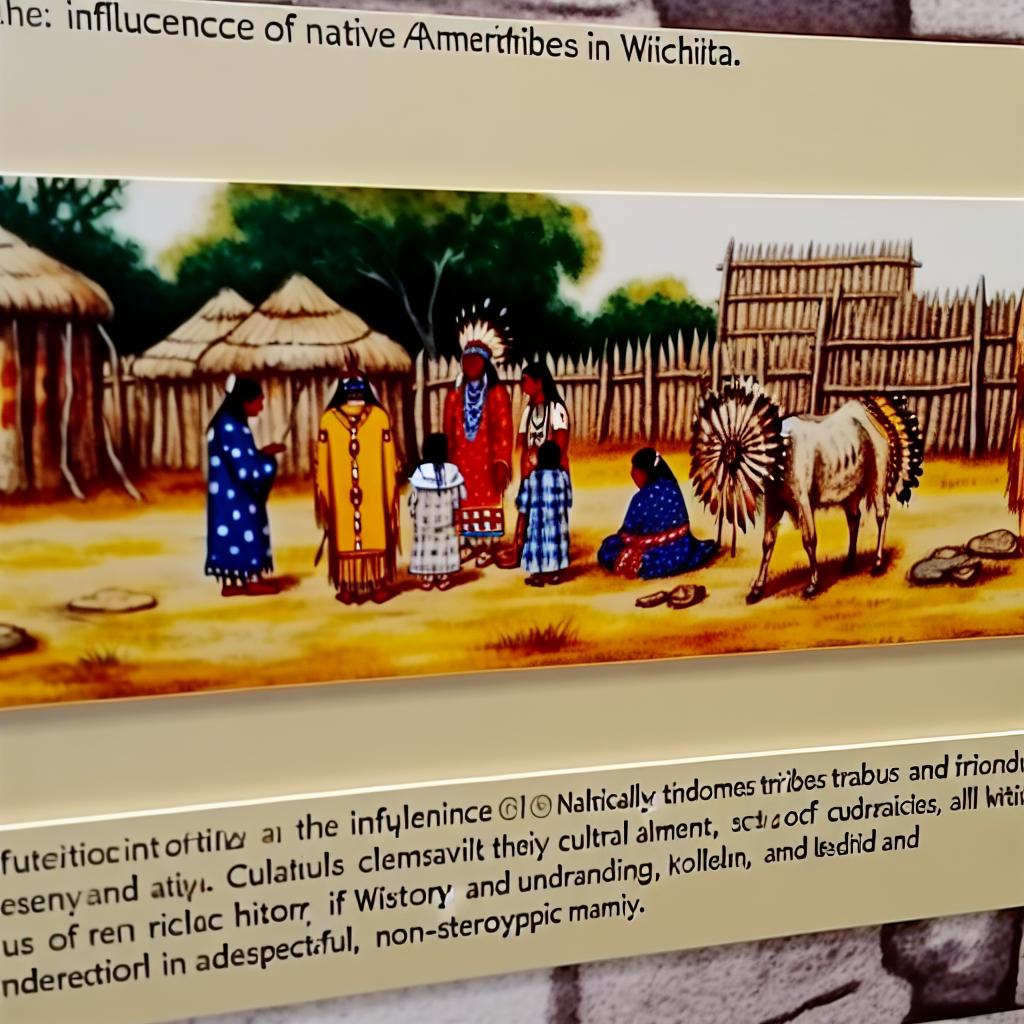The Historical Role of Native American Tribes in Wichita
The region that is now the city of Wichita was originally home to several Native American tribes, whose influence continues to be seen today. The importance of these indigenous communities is intertwined with the cultural, economic, and environmental history of the region.
The Original Inhabitants: Wichita People
The Wichita tribe, after which the city is named, were among the original inhabitants of the region. Known for their distinctive straw-thatched domed houses, the Wichita people were primarily agrarian, cultivating crops such as corn, beans, and squash. They also engaged in hunting buffalo, which was central to their diet and lifestyle. The developments in agriculture and trade introduced by the Wichita people hold significance in the region’s history.
Language and Oral Traditions
The language spoken by the Wichita tribe was part of the Caddoan linguistic family. Their oral traditions, recorded through storytelling and preserved through generations, offer vital insights into their way of life and societal structure. These traditions continue to be studied for their cultural value and historical perspectives.
Involvement in Trade
Trade was an essential aspect of the Wichita tribe’s economy, as they were strategically located near several other tribes. This facilitated exchange within an extensive network that extended far beyond their immediate region. Goods such as furs, tools, and agricultural products were commonly traded, contributing to a robust inter-tribal commerce system.
The Influence Beyond the Wichita Tribe
While the Wichita tribe is prominent, other indigenous groups have also played significant roles in shaping the region.
Impact of Migratory Tribes
During different periods, other migratory tribes such as the Comanche, Osage, and Kiowa came to the region, each contributing to and interacting with the local culture. These tribes brought different practices and knowledge that enriched the existing cultural landscape.
Cultural and Artistic Contributions
The art, crafts, and ceremonial practices introduced by these tribes have been integrated into the cultural fabric of the area. Items such as beaded clothing, pottery, and intricate jewelry are expressions of cultural identity and continue to influence modern Native American art in the region.
Environmental Stewardship
Native American tribes were adept at employing sustainable practices that favored environmental stewardship. Their understanding of the land led to methods that promoted biodiversity, such as controlled burns and rotational farming. Modern conservation efforts sometimes draw inspiration from these practices, recognizing their ecological benefits.
Contemporary Presence and Contributions
Today, descendants of these tribes actively participate in preserving and promoting their cultural heritage.
Native American Communities in Wichita
Contemporary Native American communities in Wichita engage in numerous cultural, educational, and societal activities. Events such as powwows and cultural festivals serve to strengthen community bonds and educate the wider public about Native American traditions and history.
Educational Initiatives
Various organizations work to promote understanding and appreciation of Native American histories and cultures. These initiatives often include educational programs, museum exhibits, and collaborative projects with schools and universities.
For more information on the cultural significance of Native American tribes in the Wichita region, you may visit the Kansas Historical Society or explore literature from the Kansas Native American Heritage associations. Such resources deepen the appreciation of the profound impact these tribes have had—and continue to have—on the region’s cultural tapestry.
Preservation of Cultural Heritage
The preservation of cultural heritage is a key focus for many Native American groups and their allies. This involves efforts to maintain traditional practices, languages, and lands that are of historical significance. Through community events and alliances with cultural institutions, these groups work tirelessly to keep their heritage alive. They confront challenges such as modernization and the potential loss of language by implementing educational initiatives that foster cultural knowledge among younger generations.
Economic Development and Empowerment
Economic development is another area where Native American communities exert influence today. Many tribes are working towards sustainable economic independence through diverse means, including the establishment of businesses, tourism, and the arts. Projects often emphasize cultural authenticity and community benefit, providing employment opportunities and fostering a sense of pride and ownership within the community. Some tribes have successfully reclaimed lands and are developing them in ways that align with their cultural values and environmental considerations.
Political Advocacy and Legal Rights
Native American tribes in Wichita and beyond are also involved in political advocacy, seeking representation and recognition of their rights at local, state, and national levels. Legal battles over land rights, natural resource management, and sovereignty highlight the complexities and challenges faced by these communities. Engaging in politics is not only a means of survival but also a way to assert their identity and influence in shaping policies that impact their lives and heritage.
Contributions to Regional Identity
The contributions of Native American tribes are integral to the identity of the Wichita region. Their history and culture are reflected in place names, local traditions, and community events that bring diverse groups together. Recognizing their contributions fosters a greater understanding and respect among all residents, creating a more inclusive society. The stories and accomplishments of Native Americans are celebrated through public art, literature, and the performing arts, ensuring that their legacy remains vibrant and accessible.
Understanding the historical and contemporary role of Native American tribes in Wichita contributes to a richer, more nuanced appreciation of the city’s cultural landscape. It highlights the resilience and creativity of these communities in the face of adversity and the ongoing efforts to preserve their way of life for future generations. Engaging with this history allows all who live in and visit Wichita to experience a deeper connection to the land and its original inhabitants.

